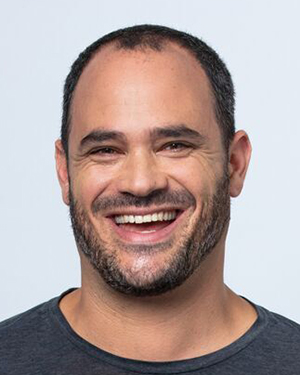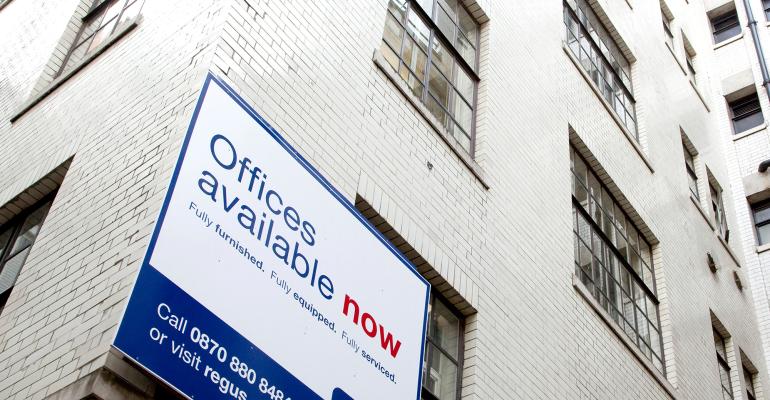Despite multiple interest rate hikes this year and lingering economic uncertainty, the overall asking price per sq. ft. for commercial real estate properties marketed on CREXi, a commercial real estate marketplace, increased slightly in November, by 2.13 percent. This is the third consecutive month of pricing gains recorded by CREXi, a Los Angeles-based national commercial property marketing and transaction analysis firm with more than $2 trillion in property listings.
But while prices for multifamily, industrial and retail properties ticked up, from 10.0 percent for multifamily to just under 1.0 percent for industrial, office prices dropped in value by 1.7 percent.
Office occupancy remained unchanged, according to CREXi data, at 84 percent overall. But lease rates on new properties are starting to show declines as businesses start to re-evaluate expansion plans in the expectation of a potential recession.
With the office sector seemingly on shakier ground than other commercial property types, WMRE talked to Eli Randel, chief operating officer of CREXi, about his thoughts on the near-term future of investment in office properties.
This Q&A has been edited for length, style and clarity.
WMRE: Have you noticed any change in how many transactions are taking place that involve office buildings? If so, what do you attribute this to?
 Eli Randel: While not all markets are created equal, some markets have shined while others have been challenged. Office demand for occupancy and investment has gradually decreased since the start of COVID pandemic, yet there remains a historically very healthy level of investment demand from a group of core, value-focused, and contrarian office investors.
Eli Randel: While not all markets are created equal, some markets have shined while others have been challenged. Office demand for occupancy and investment has gradually decreased since the start of COVID pandemic, yet there remains a historically very healthy level of investment demand from a group of core, value-focused, and contrarian office investors.
Examples of recent office transactions in these markets are Waterford Corporate Center and Washington Square in Miami that sold for about $17 million and $14 million, respectively, and South Tampa Office Park and Rocky Point Offices in Tampa that sold for $16 million and $23 million respectively. Additionally, the 111,000-sq.-ft. NorthChase at Midtown in Raleigh sold for $48 million in mid-November.
WMRE: What types of buyers are pursuing office acquisitions, and does this represent a change from six months or a year ago?
Eli Randel: In my experience, market shifts tend to change in the nature of capital pursuing acquisitions. In hot markets, you see assets get stabilized and transfer from entrepreneurial investors to more passive and core institutional investors usually at a healthy premiums In cooling markets, the opposite often happens where core and passive investors transfer assets to more entrepreneurial operators to reposition assets, exert entrepreneurial energy, and solve problems—often at a discount. The sheer sizing of institutional capital seeking to deploy hasn’t altered their active presence in the market, but we are seeing some of those persona shifts.
Institutional investors love assets with 95 percent occupancy and will pay a premium for the stability, while entrepreneurial investors love assets with 65 percent occupancy which they can dress-up with capital improvements, re-tenant and reposition, and sell for a profit. Currently, we are beginning to see more transfers from institutional investors to more entrepreneurial investors.
WMRE: What are the characteristics of buildings that are the most likely to sell or sell for the highest price?
Eli Randel: That is a hard question to answer and is largely dependent on the market and circumstance. However, we continue to see a healthy amount of demand for all property types, even where value expectations have shifted.
That said, office and land for development have experienced the greatest losses in value, office due to tenants downsizing space in accordance with remote and flexible work policies to fit daily worker attendance, while land has become harder for buyers to underwrite development in this potentially shrinking economy.
WMRE: Have you noticed any changes in pricing on these deals and if so, in what ways?
Eli Randel: Priced risk and rising interest rates have lowered leverage and increased the cost of debt and equity, which have generally expanded cap rates and softened values for many property types. However, large supplies of capital are pursuing more attractive assets, and good assets in good markets are holding strong in terms of value. Assets with blemishes have seen more significant price softening.
WMRE: How many bidders are each property getting in recent months, compared to six to 12 months ago?
Eli Randel: It’s largely dependent on the asset, market, and property-type, but there remains a healthy surplus of demand, especially given the volatility of other investment vehicles and hopefully cooling inflation. The number of bidders for assets hasn’t changed, as investor demand remains high, bidding strong, and there’s a significant amount of capital that needs placement. The bid/ask gap, however, has widened, and it will take time for sellers to come to terms with pricing at which investors today are willing to transact.
WMRE: How are higher interest rates affecting values and cap rates?
Eli Randel: Increased costs of capital have made debt and equity more expensive. This has resulted in lower leverage, higher debt service and greater discount rates, which lower NPVs (net present values) or create higher yield requirements. Additionally, fixed income yields have increased, and when adding in the risk premiums associated with real estate, this has added to required property yields, or cap rates).
Yet, a massive supply of capital seeking placement has resulted in plenty of liquidity. Demand continues to bid up deals to healthy value levels. Cap rates have expanded, but the large supply of capital seeking placement is lending to “cap rate durability” for good deals in good markets.
WMRE: Is there anything else you want to say?
Eli Randel: Despite some headwinds, we remain bullish on commercial real estate in the long term. The industry has shown great resilience, and we believe those who buy wisely during this next cycle have the capacity to build tremendous long-term wealth.





